| Ferdinand II
Emperor of Hulstria Grand Duke of Sisula Great Prince of Trigunia
| |
|---|---|

| |
| Biography | |
| Reign | 2906 - 2977 |
| Father | Maximilian VII of Hulstria |
| Mother | Idda, Countess of Savonia |
| Spouse | Princess Harriet, Duchess of Southborough |
| Issue | |
| Titles and Styles |
|
| Date of Birth | Febuary 18th, 2870 |
| Date of Death | December 14th, 2977 |
| Imperial Dynasty | Rothingren-Traugott |
His Imperial and Most Illustrious Lutheran Majesty, Ferdinand II, Defender of the Faith, by the Grace of God, Emperor of Hulstria, His Royal Northern Highness Great Prince of Trigunia, His Royal Highness Grand Duke of Sisula, His Royal Majesty King of Pulond (b. Febuary 18th, 2870, Schloss Fliederbrunn, Kien, Hulstria - d. December 14th, 2977) was the reigning Emperor of Hulstria, Great Prince of Trigunia, and Grand Duke of Sisula from 2906 to 2977. For a short period of time Ferdinand II was claimant to the throne of Deltaria as Czar prior to the Treaty of Heinrichgrad. Ferdinand II was the first son and child of Maximilian VII of Hulstria, and Idda, Countess of Savonia. Kaiser Ferdinand was the eldest out of three kids and was the older brother to Archduke Leopold and Archduchess Charlotte of Hulstria; he additionally was the the brother-in-law of Princess Lucinda of Drania and Matvei, Count of Lensk, his siblings's respective consorts. Ferdinand II was uncle to Queen Regina I of Drania and King George VII of Talmoria. Ferdinand's paternal grandparents were Klaus Gustav IV of Hulstria and Janne II of Vorona and maternal grandparents were Grand Duke Osmund III of Valonen and Amanda, Marquise of Øivine. Ferdinand's paternal great grand-parents were Godric II of Hulstria and Roberta, Viscountess of Ayelsbury and his maternal great grand-parents were Konrad I of Vorona and Cecilia Gorsky. Ferdinand II was also cousins with George III of Luthori, Valdemar II, pretender to the throne of the Vorona Archduchy, and Constantine I of Tukarali; Ferdinand was also distant cousins with Henrietta, Queen-Consort of Endralon and Tenno Kenji Ishida of Sekowo. Ferdinand II additionally was the maternal grandfather to Alexander I of Rutania. Ferdinand II of Hulstria was married to Princess Harriet, Duchess of Southborough until her death. The imperial couple produced four issues; Rainer V of Hulstria, Archduke Heinrich of Hulstria, Archduke Maximilian of Hulstria, and Aleksandra, Queen of Rutania.
Ferdinand II ascended to the throne following his father's abdication due to illness in 2906; he assumed the throne at a rather young age at 36 years old. As Emperor and Great Prince, Ferdinand II saw through the reinstatement of the Hulstro-Trigunian personal union, several domestic reforms in both nations, and a great war in the 2960s. Ferdinand's early years saw the Imperial Court grow closer to the International Monarchist League and to other reigning monarchies on the continent of Dovani, mainly the House of Santiago in Drania and to the Hemmingways in Talmoria; these friendships eventually lead to the formation of the "Imperial Consortium" between the monarchies following the "Three Monarchs Conference" in Kien. The friendship included marriages as well; Ferdinand II married the daughter of George VI of Talmoria and Ferdinand's younger brother, Archduke Leopold of Hulstria married the sister of Carlos I of Drania. In Greater Hulstria, the Hulstro nobility saw an increase of representation and power in the Imperial Diet with the likes of Isolde von Smaragdwald and Hieronymus von Büren gaining power; other nobles like Gisela von Hortensiengau, Theresia von Maringhelm, and Gottlieb von Hinterschnee would also make their marks. The Hulstrian political specturm additionally saw a three decade Christian democrat Staatsminister-ship with Jurgen Marquering, the last major power trip of the christian democrats in Greater Hulstria. In the Great Princedom of Trigunia the "Mashkov Reforms" led by R.D. Mashkov, 1st Duke of Petrovgrad, the leader of the Trigunian monarchist bloc, the Molodaya Trigunskoye Partiya, helped the Great Princedom regain its economic and political power on the continent of Keris. However the Duke of Petrovgrad, considered a national hero in the Great Princedom, died in a car accident in the early 2920s, plunging the monarchist cause into doubt in Trigunia for awhile but soon recovered; his son would later to follow in his footsteps become the Viceroy of Trigunia as well. The Mashkov name since his death has become a fixture in Trigunian politics and arguably the most powerful family on Keris besides the Rothingrens. The two families enjoy a very productive and special relationship.
The conservative rule in Trigunia with the Mashkovs eventually found its way to Greater Hulstria; with the absence of christian democrats in the Imperial Diet parties such as the Kaiserliche Hulsterreichische Partei, Faschistische Gewalt-Partei, and the Ausgehenapparat der Luskismus eventually formed a centre-right, conservative bloc in the Imperial Diet. The Ausgehenapparat der Luskismus were a faction formed from the members of the House Lusk that left their homeland in Central Macon to come to Greater Hulstria; the Lusk remained close friends with the Rothingrens through their political career but left the political scene in the late 2940s; they now continue to be members of the Hulstrian nobility. With that being done the Imperial Knights party replaced the Lusk in the conservative government, known as the "Imperial Conservatives", a coalition government that would serve for nearly a century.
At the end of his reign in 2977 Ferdinand II was the longest reigning monarchy in Hulstrian and Trigunian history; he was also at the time the oldest monarch in Terra, both in terms of age, and length of reign. When Augustin-Bernard I Rildanor died in 2945, Augustin was the oldest monarch on Terra, reigning from 2876 to 2945 but Ferdinand quickly took that mantle, and eventually reigned longer than Augustin-Bernard I. The King of Rildanor was a cousin of Ferdinand II through Godic II of Hulstria's daughter, Matilda, Archduchess of Hulstria, and her consort, Hénri III of Rildanor. It should be noted however that Augustin-Bernard I is not in line of succession to the Hulstrian throne as his dynasty, the House of Orléans-Vasser, is of Orthodox Catholic religion. The two monarchs enjoyed a cordial relationship in the International Monarchist League and the two nations were bound by the Hulstria-Rildanor Fellowship Treaty, establised originally between Alexander I of Hulstria, and Hénri III of Rildanor.
Early Life & Education[]
His Imperial Majesty Archduke Ferdinand William Franz-Karl of the House of Rothingren-Traugott was born on Febuary 18th, 2870, at the Imperial Fliederbrunn Palace, to Maximilian, Crown Prince of Hulstria and Idda, Countess of Savonia. Archduke Ferdinand became the first child of the imperial couple and was quickly joined by a younger brother, Archduke Leopold, a year later in 2871, making Ferdinand the eldest child in the family. Archduke Ferdinand's paternal grandparents were Klaus Gustav IV and Janne II of Vorona, and maternal grandparents were Osmund III of Valonen and Amanda, Marquise of Øivine. Archduke Ferdinand during his young childhood years was very closely watched by his father and resided mainly at Fliederbrunn Palace though did during certain seasons reside at Phönixstein Castle and Korlburg Palace. His paternal grandmother, Janne II of Vorona, carefully watched over the young Archduke as well. Archduke Ferdinand began his school career when he was seven years old and was privately tutored until he was 10 years old when he enrolled in the Kiennese Boarding School in Kien, close to Fliederbrunn, as his father Maximilian requested. The young Archduke was considered to be very active though at times could be very shy when he came across new people; Ferdinand eventually grew out of the latter. As a child he idolized the Hulstrian Monarchy and past Emperors, like Ferdinand I and and Alexander I of Hulstria, who was also the Shah of Barmenia at one point. At the age of 12 Archduke Ferdinand took his first foreign trip to Fort William, the capital of Luthori, a monarch under the Orange-Villayn branch of the Rothingrens.
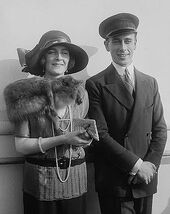
Princess Harriet of Talmoria (L) and Archduke Ferdinand of Hulstria (R)
In 2888, at the age of 18, Archduke Ferdinand enrolled at Rainer University in Veilchen, Hilgar, and took up the study of political science, international affairs, and public policy & administration. The Archduke also took up some sports offered by the University, notably cross country and track. Ferdinand excelled particularly in political science and Terran world history. Archduke Ferdinand also did very well in in the sport of cross country skiing and took part in many skiing competitions, both in Greater Hulstria and abroad; he did so well that during his sophomore year at Rainer University, he was the captain of his cross country skiing team and led his team to gold medal victory in the 2890 Northern Barrier Range Biathlon. In 2889, Archduke Ferdinand met with the Emperor of Talmoria, George VI, during the Talmori monarch's State Visit to Greater Hulstria; Ferdinand also met his daughter, Princess Harriet, who was too his age at the time at this state event. Ferdinand actually toured Harriet through Fliederbrunn Palace and danced with each other her the state dinner that was held. The two developed a long-range relationship following the State Visit specifically due to Ferdinands and Harriets respective schooling. Princess Harriet even attempted to get transfer to Rainer University to be with the Archduke but was unable to.
Crown Prince of Hulstria[]
Archduke Ferdinand in early 2892 was still attending Rainer University in Veilchen and had planned to graduate the following year to pursue a career in the Imperial Navy, following in the footsteps of his paternal great grandfather, Godric II of Hulstria. Ferdinand enjoyed the student life during his time at Rainer and as noted took part in many activities, becoming a very well known figure in the campus community; the young Archduke also was able to put significant amount of time in his schooling due to his place in the Hulstrian Monarchy. While then Ferdinand was 2nd in line to the Hulstrian throne, many royal responsibilities were often given to his father, Crown Prince Maximilian, the then heir to the throne in Greater Hulstria. However in May of 2892 Archduke Ferdinand would presented a new wave of duties and engagements; Klaus Gustav IV of Hulstria, Archduke Ferdinand's paternal grandfather, passed away in late May following a long year of problems with his heart; Klaus Gustav IV was 89 years old and reigned for over 36 years under a unique times in Hulstrian history. On per with the Imperial Writ of the Regulation of the Hulstrian Imperial Throne, Ferdinand's father ascended to the throne as Maximilian VII of Hulstria and subsequently Archduke Ferdinand became the new Crown Prince of Hulstria. Ferdinand was hit hard by the death because he was close to his paternal grandfather; the two especially became close in Ferdinand's late teen years when he started to take up in activities on behalf of the Monarchy and Ferdinand often confided in the Emperor of Hulstria, considering him an "adviser" of sorts on matters concerning life. Following the large funeral held for Klaus Gustav IV, now Crown Prince Ferdinand took about a month off from schooling at Rainer University, and returned back to normal scheduling in the summer of 2892. Two years later in 2894 Crown Prince Ferdinand finished his schooling from Rainer University with high honors, graduating in the top five of his graduating class.
Military Career[]
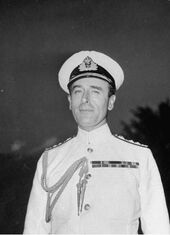
Ferdinand in Admiral Uniform
Shortly following his graduation, and after some time to himself to perform imperial duties including catching up with Princess Harriet, Crown Prince Ferdinand enrolled into the Hulstrian Imperial Navy at the Heinrich I Imperial Navy Academy, following in the steps of his paternal great grandfather, Godric II of Hulstria, who went onto become the Commander of the Imperial Submarine Fleet. A year later Crown Prince Ferdinand completed his naval officer's training and was commissioned as an Lieutenant on board the HIMS Imperial Ark in the winter 2895. Ferdinand would serve on the Imperial Ark for the next year, taking part in several military exercises and travels around Terra; in fact, the HIMS Imperial Ark was one of the first Hulstrian ships to tour the newly acquired southern Caltropic territories and docked at one of the ports in the Gulf of Histap for a period of two days before leaving back to mainland Hulstria. In 2898 Ferdinand was promoted to the rank of Commander and was given command of the Imperial Marine Strike Fighter Squadron on board the HIMS Heinrich II. At the time of his promotion, the Imperial Navy began construction on a new generation of strike fighters and a portion of these new fighters were given to Ferdinand's squadron; as a result, Ferdinand did periodic training exercises to test out of the efficency and effectiveness of these new fighters. His dedication and work effort went over well with the leadership of the Imperial Navy; the Crown Prince was soon promoted and commissioned as an Admiral in 2900. Ferdinand was also given the title of the Chief of the Imperial Navy Aviation Squadron by his father, Emperor Maximilian VII of Hulstria. Not only was he given command over the Imperial Navy Aviation Squadron, as Admiral he was given command of several other naval ships as well. Ferdinand as Admiral was noted to have taken several international trips and tours with his ships as well as doing regular military exercises. Admiral Ferdinand would serve the Imperial Navy well until his departure four years later.
Marriage to Princess Harriet of Talmoria[]
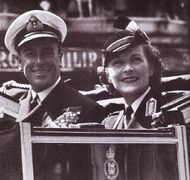
Crown Prince Ferdinand (L) and Princess Harriet (R) a month before their wedding
In early 2903, about four years following his promotion to Admiral in the Imperial Hulstrian Navy, Crown Prince Ferdinand decided to take a leave from the military following more than a decade of continuous service. The Hulstrian Imperial Family, as well as the citizenry, applauded Ferdinand's service to his country, and many believe he truly earned his position within the imperial ranks. Ferdinand's load of responsibilities, such as representing the Monarchy and commanding the Imperial Navy. also gained respect from the citizens and Ferdinand when he arrived in Kien for his homecoming celebration, thousands crowded the streets to greet the Hulstrian heir. Many saw his full entrance back into the Monarchy also as a chance not only to become closer to the people and closer to his job to represent the Monarchy, both domestically and internationally, but to finally tie the knot with long-time girlfriend, Princess Harriet of Talmoria, whom originally met back in the late 2980s when Harriet's father, George VI, Emperor of Talmoria, was received in Greater Hulstria by the Emperor at the time, Klaus Gustav IV of Hulstria. The two ever since the State Visit became involved in a relationship, often times long-distance, due to their respective schooling and military careers. Ferdinand went onto enroll in Rainer University while Harriet enrolled in the University of Iral and both went into the navy after their education. Harriet left the navy after nearly a decade of serve two years prior to Ferdinand's leave but did not seek to involve herself in another relationship, sticking to the Hulstrian Crown Prince. Ferdinand as well remained truthful to Harriet by not engaging in any other relations either. Finally in 2903 Ferdinand, Crown Prince of Hulstria, proposed to Princess Harriet and she accepted; Maximilian VII and George VI, their respective parents, gave consent and full support behind the marriage. The wedding ceremony was then set for the fall of 2903.
The attendee list for the wedding was needless to say very profile. Several foreign Monarchs and Heads of State attended the wedding of the Hulstrian heir and the Talmori Princess held at the Hulstrian National Cathedral in Kien. George III of Luthori, Osmund III of Valonen, George VI of Talmoria, Adela I of Vorona, and Aljendro I of Drania were some of the notable mentions during the wedding; George VI of course being the father of Harriet was expected already to attend. Osmund III, the Grand Duke of Valonen, originally thought he couldn't make it due to his old age but managed and personally attened; Osmund III of course is the maternal grand-father of Crown Prnce Ferdinand. Maximilian VII and George II, both descendants of Heinrich I, were sitted together at the very front row during the ceremony, as were their wifes. Following the wedding ceremony, Ferdinand and Harriet were cheered and welcomed by the crowd outside the Hulstrian National Cathedral as they walked out to their limousine; along the way to the limousine, Ferdinand and Harriet accepted numerous flowers and wreaths. The two then entered the car and were transported to Fliederbrunn Palace where a large celebration ensued. At the conclusion of the wedding, the Hulstrian Imperial Family, as well as the new royal couple, and the guests went on the balcony of Fliederbrunn to watch a fireworks show, as well as thousands of citizens on ground level.
Trigunian Restoration of 2903[]
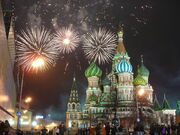
Celebration of the Monarch restoration in Heinrichgrad.
Following the marriage of Crown Prince Ferdinand and Princess Harriet of Talmoria, rapid new developments were taking hold in the Keris nation of Trigunia, a nation that which was once in personal union under Heinrich I of Hulstria during the later years of his reign. However since it was abolished by communist radicals in the late 2600s, the Emperors of Hulstria had since been "pretenders to the throne" of Trigunia, retaining their claim and their title of Great Prince of Trigunia. Since the late 2600 abolishment, Trigunia went under several different communist and dictator governments in the two hundred years before the 2903 restoration; before 2903 and the rise of the conservative Young Guard Party, Trigunia was under a corrupt government where slavery was legal, and the state had supreme power over the workings of the people. However, at the turn of 28th century, the citizens of Trigunia did not put their support being the tainted regime, rather they put their support being a rising political party known as the Young Guard Party, an up and coming conservative movement; the Young Guards of Trigunia was a monarchist party that supported the return of the Rothingren-Traugotts as well as reforming the system of government within the nation and see through economic growth to regain Trigunia's power over the continent. Led by R.D. Mashkov, the Young Guard Party was able to successfully gain mass support of the population and by 2903 was in complete power of the legislature, kicking out the corrupt institutions.

R.D. Mashkov was the key player in the Monarch restoration in Trigunia.
Once in power, the Young Guards moved immediately towards restoring the Rothingren-Traugott Monarchy, and formally introduced legislation to do so in early winter of 2903. The motion passed with overwhelming support and for the first time in over 200 years Greater Hulstria and Trigunia were to be in personal union. Maximilian VII was in contact with leadership of the Young Guard Party prior to the restoration; the Duke of Flieder had originally started communications on behalf of the Emperor during the early years of the Young Guard Party. It was established early on that Trigunia would return as a constitutional monarchy and would adapt a government system similar to that in Greater Hulstria with a Governor-General system but would instead call their representative a Viceroy.
Klaus Gustav IV of Hulstria, Ferdinand's paternal grandfather, attempted to try to restore the throne in his reign but was unsuccessful, deciding to drop the issue during his reign to focus on building upon thrones he already held. However, Maximilian was more successful in his efforts, and actually saw through the restoration; following the restoration vote, Maximilian VII traveled to the Bear's Den where he formally sat on the throne of the Great Princedom of Trigunia; the now Great Prince also met with R.D. Mashkov, the Viceroy of Trigunia, the elected representative of the Monarchy. Trigunia, while now a Monarchy, adopted a similar structure to that of Greater Hulstria with a Governor-General System using the title Viceroy rather than a Governor-General. Great Prince Maximilian visited Trigunia to show full support for the newly re-created government structure. Ferdinand, who would also hold the title of Hereditary Prince of Tirgith, traveled with his father during that visit and was named as the official representative of the monarchy concerning Trigunian affairs. When his father was absent, Ferdinand acted in his place in which he frequently traveled between Fliederbrunn and the Bear's Den, as well as conducting imperial activities and responsibilities within both nations.
Abdication of Maximilian VII[]
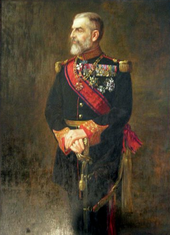
Maximilian VII of Hulstria
Shortly after the restoration of the Trigunian monarchy in 2903, Crown Prince Ferdinand's father fell ill. At first the Imperial family, including Maximilian VII himself, did not worry much about the illness as Maximilian had prior to this illness experienced little to no health problems, and therefore, Maximilian VII continued to reign as Emperor of Hulstria and as Great Prince of Trigunia without much problems. Secretly and out of the public eye, however, Maximilian VII was in and out of hospital for long series of tests and treatments.
In January 2905, shortly after New Years celebrations held at Fliederbrunn Palace, Maximilian VII was admitted to the Heinrichgrad Imperial Military Hospital and stayed there for over two weeks; Crown Prince Ferdinand became acting regal of the Hulstrian Empire and the Great Princedom for the duration of this period. The admission to the hospital was reported to the public.
Following this incident, many within the Imperial Court were worried that Kaiser Maximilian's state of health may affect his Imperial duties and responsibilities but the monarch refused to abdicate the throne, as some advised him to do. Ferdinand, then Crown Prince, also joined his father in opposition to some within the Court that called for the Kaiser to abdicate and heal; due to the united front from the Rothingrens, the voices for such an action quickly died down as it seemed it would not come to be and many did not want to go against the Emperor, nor his son, on this delicate issue. The opinion of the public court were also on the side of His Imperial Majesty and the Crown Prince; while the public did know the prior events of hospital admissions, Maximilian's admission to the Heinrichgrad Imperial Military Hospital was covered by Trigunian news outlets and as such came back to the Imperial Crownlands, the public still overly supported the Emperor, and were firmly against the Emperor of Hulstria stepping down. Ferdinand's father, also reffered as "Heinrich III of Hulstria & Trigunia" due to his resemblance to Heinrich I, enjoyed an "excellent" job approval rating of over 80% in a poll conducted just before his shocking announcement of abdication in 2906. Maximilian VII's health began to deteriorate rapidly going into 2906 and despite being against it prior, Maximilian VII decided to abdicate the Crown to his son Ferdinand. Maximilian VII realized the crown had to be passed to a newer generation and have his more energetic son command the Empire.
Emperor of Hulstria[]
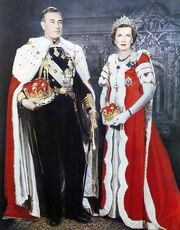
Coronation Portrait of Ferdinand II and Princess Harriet
Since Maximilian VII, Ferdinand's father, abdicated in June of 2906, the Crown Prince had to wait six months until his formal coronation as the Emperor of Hulstria due to the abdication policy of the Imperial Writ on the Hulstrian Throne. Ferdinand couldn't also be coronated as the Great Prince of Trigunia because of this as well. In this six month period, Fliederbrunn Palace was given time to prepare for the entrance of a new Emperor of Hulstria as too the population; Hulstrians were saddened on Ferdinand's father condition and many saw this six month period as a sort of mourning period for the beloved Maximilian VII as citizens held large vigils outside Fliederbrunn. The Imperial Diet as well was closed down with voting sessions limited to budgets and territory re-organization resolutions; Governor-General Isolde von Smaragdwald ordered flags be flown half staff at all major public buildings for the entirety of that period. Despite the mourning and the sense of loss, the Monarchy was still sound; Maximilian left a healthy and able-bodied House of Rothingren-Traugott for Ferdinand with the expansion of the Empire and new relations with other imperial families.
Finally in November 2906, Ferdinand was coronated as the new Emperor of Hulstria, at the Hulstrian National Cathedral. Several of the same people who attended the wedding Ferdinand and Harriet attended the large coronation and the celebrations following it. Ferdinand was crowned and recieved the title of "His Imperial and Most Illustrious Lutheran Majesty, Ferdinand II, Defender of the Faith, by the Grace of God, Emperor of Hulstria". The new Emperor's regnal name came from Ferdinand I of Hulstria, whom Ferdinand II himself is a direct descendant, the Rothingren-Traugott Emperor following the restoration of the Hulstrian Monarchy in 2551 after the Congress of Kien.
Domestically, Ferdinand II came to the throne during a time where politically the Hulstrian electorate was split on their preference for a political party. The Faschistische Gewalt-Partei, a conservative monarchist party, was enjoying a streak of plurality in the Imperial Diet however big government parties like the Knights Illuminate and the federalist Christliche Liberalen Allianz were enjoying sizeable representations as well. Despite the electorate's split, Greater Hulstria was stable politically. Economically, the nation was going through a period of growth; following a massive spending increase to the budget, GDP rose to over 14 trillion crowns, and trade as well increased. Another boost the economy was the re-location of the Seko-Cola Company, Terra's largest soft-drink company, to Veilchen, Hilgar; Ferdinand II himself attended the opening ceremony. Concerning the House of Rothingren-Traugott, the family was doing good, and Ferdinand II undertook efforts to expand relations with other royal families around Terra; like his father, Kaiser Ferdinand made sure relations with the House of Hemmingway remained sustainable, and that the Rothingrens extended it's hand of friendship to isolationist Houses. Internationally, Greater Hulstria enjoyed freedom from conflict but close ally Luthori was under republicanist threat from Mordusia, a nation in personal union with them. Unlike the Beiteynu-Luthori War, Luthori and Mordusia did not engage in military conflict, rather they decided to hold a conference to settle their differences, which lasted for several years. Greater Hulstria, while not involved in the conflict, sent a delegate to that conference as an observer from the Ministry of Foreign Affairs, then under Arnold Chamberlain; he event ended in the early years of the decade of 2910 without a war. However, while Ferdinand's cousin achieved success in Mordusia, George III was ousted from his throne in Alduria as it was taken over by communist separatists. In 2911, another monarchy faced abolishment; the House of Fortenohfiv was facing dissent from republican voices in the parliament, not satisfied with the King, Joseph III of Endralon; despite Joseph III accepting a Viceroy system to be put into place, allowing an elected representative Head of State, something his father, Joseph III did not do, the republicans abolished the monarch in 2911, and burned down the Palace of Ginbari, the official residence of the Fortenohfivs. Ferdinand II offered the King of Endralon residence at the Bear's Den in Trigunia but Joseph III refused, as he was elected President of Endralon not too long after being disposed.
In February 2912 Kaiser Ferdinand II and consort Princess Harriet gave birth to their first son, His Imperial Majesty Archduke Rainer of Hulstria; since the imperial couple did not have a child prior from assuming the throne, Rainer was immediately given the title of "Crown Prince of Hulstria", and was declared the new heir apparent. Ferdinand's younger brother, Archduke Leopold of Hulstria, until Rainer's birth, was the heir presumptive to the Hulstrian and Trigunian thrones, and as a result did have the title of Crown Prince for some time (about six years). Since Leopold was only the presumptive heir, any birth from the Emperor and Empress would've changed his position in the line of succession to the Hulstrian throne which Rainer's birth did. Leopold in fact was one of the first people to come visit Ferdinand II and Harriet following the birth of their first child. Rainer, Crown Prince of Hulstria, was named after Rainer IV of Hulstria, the Emperor of Hulstria on the Hulstrian side during the period of the "Dual Monarchy of Hulstria & Gao-Soto". Two years later in 2914, Emperor Ferdinand and Empress Harriet welcomed their second child, Archduke Heinrich, named after Heinrich II. Ferdinand II, shortly following the birth of his second son, attended the opening ceremony of a new sea port built in the Eastern Territories of which was built by the "Hulstrian Spending & Investment Act" back when he assumed the Hulstrian throne. The Kaiser was honored with a special plaque commemorating the new sea port, while it was only one of the several planned mega-ports in the Eastern Territories, and was given the privledge of welcoming the first trading vessel onto the port.
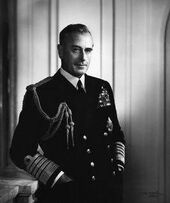
Kaiser Ferdinand II in 2916
By 2915, the internal political specturm of Greater Hulstria was experiencing another round of increased involvement of nobility in both the Imperial Diet and Crownland governments, similar to that of what was going on within the Great Princedom of Trigunia. This trend started in the reign of Ferdinand's father, Maximilian VII, when Isolde, Countess of Smaragdwald of the Imperial Hulstrian Party was elected as the third woman Governor-General though hat it's roots back in the Imperial Court of Klaus Gustav IV and the Staatsministership of the Duke of Strauss. Many believe that the Countess of Smaragdwald, who prior to her election served as the Staatsminister of His Imperial Majesty's Government, helped other nobles who were involved and who wanted to become involved in the political process by giving them a road to travel on, meaning her election opened up a new portal for the artistocracy in the Crownlands; for example, three years later in 2901, Alvin, Margrave Hallstatt was elected as Chief Minister of Budenlar, and Friedhelm, Viscount of Wehmeyer was elected as the Mayor of Wolfenfurt, a major industrial city in Budenlar as well; the Margrave Hallstatt would eventually serve as the Minister of Finance and Minister of Trade & Industry later in his political life. These were one of the few nobles involved in national government but many were scattered across the Crownlands and many more would join in on the trend later on in Ferdinand's reign. These nobles were also very loyal to the Monarchy and Ferdinand II, creating a coalition of royalist unity within the halls of government and the Imperial Court; Ferdinand II was very close to some of these nobles while still maintaining his apolitical status and this fact helped smooth governing within the Diet. The strong unity helped Greater Hulstria maintain it's status as a safe and solid consitutional monarchy during the early years of Ferdinand's reign and onward. The last time Greater Hulstria saw such a presence of nobles was during the reign of Ferdinand's paternal grandfather, Klaus Gustav IV of Hulstria as noted, who saw the re-emergence of the House of Strauss in Hulstrian politics as well as entrances of the Labsburg and Anderich nobility.
Alliance with Carlos I of Drania[]
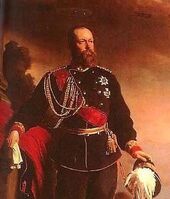
Towards the end of the 2910 decade, the nations of Greater Hulstria, Drania, and Talmoria were the only three sitting monarchs on Dovani, and the only three recognized legitimate by the International Monarchist League; however out of these three, Hulstria was the only one with any territory. Despite this, the three monarchs enjoyed cordial and friendly relations, mainly through royal marriage but Hulstria and Talmoria did have governmental relations as the two nations ratified the "Hulstria-Talmoria Agreement on Non-Aggression" in 2895, establishing a state of friendship, and non-aggression between the two parties. This agreement was done under the reign of Maximilian VII of Hulstria, Ferdinand's father, and close friend to George VI, Emperor of Talmoria; Klaus Gustav IV of Hulstria, Ferdinand's paternal grandparent, recieved George VI during a State Visit in 2890, two years before his death, and this event helped lead to not only the creation of formal Hulstrian and Talmorian diplomatic ties but also brought together Ferdinand and Princess Harriet of Talmoria, who later married in the early 2900s. The Rothingrens and Hemmingways enjoyed a solid friendship following that State Visit while in the process helping bring back Hulstro-Talmori ties; Ferdinand's father kept close to George VI through his reign and also expanded relations with Drania, who had taken the throne in 2876, then under the reign of King Alejandro I. There however was not any treaties signed between Drania and Hulstria during this time but there was marriage between the two monarchs; in the early 2900s, Maximilian's second son and Ferdinand's younger brother, Archduke Leopold of Hulstria, married Princess Lucinda of Drania, daughter of Alejandro I, establishing a natural alliance between the two nations. Maximilian was not able to seek further relations with Drania due to his sickness and subsequent abdication to Ferdinand, who became Emperor of Hulstria as a result. When Ferdinand II came to the throne, Carlos was not yet the King of Drania, but the two royals still knew each other through balls hosted by the IML; Ferdinand and Carlos had similar goals and aspirations, as well as many other common traits. Both came from a distinguished line of ancestry and both believed in the power of the constitutional monarchy, as well as being a stern statesmans, a defender of the people and the faith. Both also wished to improve monarchial status around Terra and used their influence within the IML to that; it seemed like an immediate alliance but since Carlos did not yet ascend to the throne, any formal relations between the two would have to wait, and Ferdinand would have to settle with Carlo's father, Alejandro I. However, Ferdinand II did enjoy a cordial relationship with Alejandro I but again, no alliances were established. When Alejandro I died and the Dranian Crown Prince became Carlos I of Drania, the two monarchs immediately began to communicate daily, and work on several projects.
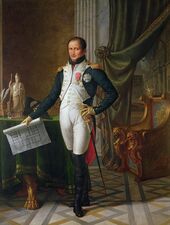
Carlos I of Drania
In one of the first acts of this new friendship, Greater Hulstria ratified the "Dranian Ecotourism Initiative", a major economic and environmental treaty drawn up by Bernardino López de Carvajal, the Dranian Minister of Foreign Affairs. Hulstria was one of the many nations that ratified the nation, inlcuding Luthori, Zardugal, Vorona, and Tukarali. Kaiser Ferdinand II also named his younger brother, Archduke Leopold, has the Monarch's Ambassador to Drania, which then promoted the Hulstrian Ministry of Foreign Affairs to name Archduke Leopold the official Hulstrian Ambassador to Drania; since Leopold was married to the younger sister of Carlos I, the natural bond was there. The two sovereigns however did not exchange State Visits during the first years of Carlos' reign but in the late 2910s Ferdinand II and Carlos I exchanged several State Visits. In 2919 Kaiser Ferdinand II was received by Carlos I in Drania in the first State Visit any Hulstrian monarch or any Hulstrian foreign delegation had made to the Dranian peninsula in centuries. Ferdinand II lead the illustrated Hulstrian delegation, which also comprised of Governor-General Hieronymus von Büren, Foreign Affairs Minister Arnold Bauer-Chamberlain, and the Imperial Commissioner of the Hulstrian Dovani. The other members of the delegation during this State Visit meet with their respective counter-parts and took part in a large state dinner hosted by the King of Drania at the Royal Palace in the nation's capital. Many of Drania's political elite were in attendence, including the powerful Mendoza political family, which then held both the posts of Prime Minister and Viceroy. This State Visit was not without caution; due to the large amount of high-profile individuals, security was incredibly ramped up in the case of an event of terrorism. Due to the terrorist attacks in Luthori and Zardugal months prior to the State Visit, both nations did not take any chances; while citizens were free to flood the streets and throw flowers at the monarch's motocade, police presence was very much notable. The State Visit though went off without a hitch and many foreign and domestic observers hailed the visit as a success, as well as a new start of Hulstro-Dranian relations. Carlos I, a few months after Ferdinand's visit to the Dranian capital, also made his way to Kien to visit the Emperor of Hulstria. Here George VI of Talmoria as well was in attendence. During this meeting, the three monarchies discussed creating an alliance, and all three agreed that joining together would help improve the spread of monarchism on the continent of Dovani, which at the time of the alliance the only reigning monarchies on the continent where there sitting at the conference hall at Fliederbrunn Palace. The idea was discussed originally by Ferdinand II and Carlos I during one of their State Visits and George VI was included in on the discussions as time went on. A treaty was drafted up at this conference, known as the "Three Monarch Conference", however George VI of Talmoria, while he did sign onto the treaty, several months later died, and his successor, George VII, was disposed of in a republican takeover, creating a Talmori Republic. The alliance was then left to Hulstria and Drania to see through.
Formation of the Imperial Consortium[]
Conservative Rule In Hulstria[]
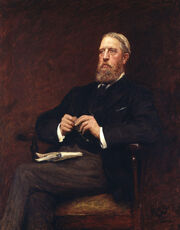
Going into the 2930s, Ferdinand II was going into his "silver jubilee", meaning his 25 years of rule on the Hulstrian imperial throne. The Kaiser remained very popular in the Imperial Court and among his subjects; due to the success of the Hulstro-Drania alliance and Ferdinand's increased role in world affairs, the monarchy was at its highest levels of support. Despite being in his 60s the Emperor remained very active in Hulstrian events and still maintained a large amount of patronages over several organizations. Ferdinand II around this time also saw the nomination and confirmation of his younger brother, Archduke Leopold of Hulstria, as the Imperial Commissioner, the administrative head of the Hulstrian Empire which spaned across eastern Dovani. His confirmation was done with unanimous support by the Imperial Diet, with both the social democrats and the conservatives voting in favor; Hieronymus, Burgrave of Büren, then Staatsminister of His Imperial Majesty's Government, originally nominated Leopold to the position. The Burgrave of Büren was successfull in lobbying support from both left-wing and right-wing factions in the legislature, going as far as to secure a written statement from the Archduke saying he'd resign if he would assume the throne; this move was seen largly as ceremonial though it secured the votes needed to confirm the Kaiser's younger brother. Archduke Leopold was fifth in the Line of succession to the Hulstrian throne at the time so the chances of him actually taking the throne were very slim. The confirmation was seen as a major victory for the conservatives; while the vote was bi-partisan, the conservatives were achieving their goal of putting the aristocracy in higher positions of government, and increasing the role of the constitutional monarchy. The Burgrave of Büren at the time was a high ranking member of the conservative bloc in Greater Hulstria and since the Burgrave led this effort, it was seen as a definitive victory for the conservative bloc. The Emperor of Hulstria while he himself having his own council on colonial affairs as a result of his brother now the administrative head of the Hulstrian Empire Ferdinand II took a much more active role in the colonies, and took part in various activities. The Emperor also saw though many infrastructure projects within the Histap Valley, a geographical location within the Hulstrian Empire, and gave his patronage to many local and regional organizations in the area.
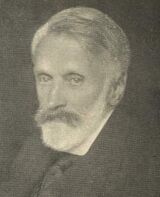
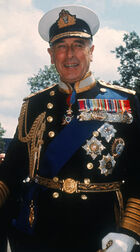
Kaiser Ferdinand II in uniform (c.2949)
As for the conservative bloc, the group was given a large boost in power following the election of Joseph Roderick II of the conservative monarchist political party, the Faschistische Gewalt-Partei, as Governor-General of Greater Hulstria in 2931; the conservatives now controlled both the elected Head of State and Head of Government positions. This was thanks to the collapse of social democrat faction and other left wing parties, as well as the country's growing interest in conservative rule in Greater Hulstria; this trend had been noted prior to Roderick's victory as the electorate had been voting for parties such as the FAP and KHP in the past few general elections before 2931. The rise of conservatism also gave way to the return of the "Imperial Conservative" cabinet, a coalition government that ruled in the early 2700s with the likes Edmund von Greifstein and Wolfgang Reinhardt at the reigns; while mostly made up of conservatives from the FAP and the KHP, other parties such as the Imperial Knights and the newly arrived Lusk Party were included in the cabinet government, maintaining the tradition of unity cabinets even when the conservatives held a supermajority. The House Lusk during this time period made their entrance into Hulstrian politics; as noted they were included into the Imperial Conservatives cabinet shortly after the election of Joseph Roderick II. The Lusk were the ruling family of Central macon before they were ousted in a coup and were forced into exile. Greater Hulstria, while had always been friendly to the Lusk monarchy, accepted the family in open arms; the Lusk eventually formed into a political party in Hulstria and were strong advocates for the Rothingren-Traugott monarchy.
Since the conservative bloc was very friendly to the Kaiser, as this bloc traditionally advocated increased powers to the monarchy, support for the monarchy, and the general aristocracy, open communications between the three branches of government came very smoothly. This was especially true with Gisela von Hortensiengau who became the Staatsminister of His Imperial Majesty's Government in 2933, succeeding the Burgrave of Büren; the Emperor and the Staatsminister enjoyed a close, apolitical line of communication. Ferdinand's great great paternal grandfather, the popular Godric II of Hulstria, was the monarch during the Staatsministership of Wenzeslaus, Count of Hortensiengau, whom Gisela is a direct descendant of; Wenzeslaus would craft himself as a very successful Hulstrian politician, serving as the Staatsminister, Imperial Commissioner of the Hulstrian Empire, and a ranking member of the Imperial Hulstrian Party. His political edge would transfer to Gisela, Countess of Hortensiengau, who carried on many of the traits by her great great grandfather; Wenzeslaus should be noted to also have been apart of the conservative bloc during his tenure. Like with the Mashkovs in Trigunia, Ferdinand enjoyed friendly yet formal relationship with the Staatsminister; however traditionally, the Emperor of Hulstria and the Staatsminister have been close throughout Hulstrian history.
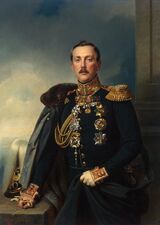
Klaus Gustav IV's marriage to Janne II of Vorona paved the way for the Bavoria cadet branch for the House of Rothingren-Traugott
The large support for the conservatives, including the return of the Imperial Conservative coalition government, paved the wat for the re-election of Joseph Roderick II in a special election in 2933. In 2934 Ferdinand II saw voices in the Socialist Republic of Vorona calling for the return of constitutional monarchy under the Rothingren-Traugott cadet branch of the House of Bavoria; the Hulstrian conservative government was known to be supportive of the return of the monarchy, as was Ferdinand. The pretender to the throne of Vorona, Valdemar II, helped lead the charge with the Voronian Imperial Party, the main party involved in efforts to restore the monarch. Valdemar and Ferdinand were cousins; Valdemar II is a direct descendant of Klaus Gustav IV of Hulstria and Janne II of Vorona, Ferdinand II's great paternal and maternal grandparents, through their second child and only daughter, Archduchess Adela (later Adela I of Vorona). The Voronian Imperial Party were successful at drawing large crowds for their political rallies and other events, however communist agents within the nation prevented the monarchists to win; while never formally confirmed by the Republic of Vorona, there are rumors that the communist political forces within Vorona rigged the election, and caused the Voronian Imperial Party to lose. Despite the defeat, the monarchist movement created a large amount of momentum for a restoration. The royalists in Vorona would not regain control of the country until the 2980s where they gained a supermajority in the legislature and restored the Archduchy of Vorona as Philip II as their monarch.
While Greater Hulstria was ruled by the conservatives, progressivism was still on the move in the sense that during this time in Ferdinand's reign, and in political Hulstria, women in record numbers were getting involved in government. Besides Gisela, Countess of Hortensiengau, several other woman politicians came to Kien to start their political careers. This sort of increased political involvement by the female Hulstrian was not seen since the reign of Godric II of Hulstria; women such as Theresia, Countess of Maringhelm for example was a product of this period in Hulstrian politics. The Countess of Maringhelm would break grounds becoming fourth only Governor-General of Greater Hulstria and became the party leader of the Faschistische Gewalt-Partei in 2951, the first ever woman to assume that position in that party's 366 year history. Many political pundits coined the Hulstrian government in this time the "Countess Government" since both the Staatsminister and Governor-General were nobles of Countess titles. Maringhelm would continue to serve as the Governor-General of Greater Hulstria until 2960 where she decided not to run for a fourth term, allowing Trade & Industry Minister Walter von der Hyde, a fellow conservative, to take her place at the position in the general elections.
Great Prince of Trigunia[]
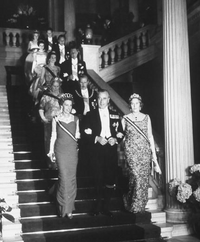
Ferdinand I (center) at his Trigunian coronation ceremony
When Ferdinand was the Hereditary Prince, he had served as the representative of his father Maximilian VII in the Great Princedom, and was closely connected with the population of Trigunia and its new governmental system. As representative, Ferdinand took it upon himself to ennoble R.D. Mashkov, the leader of the Young Guard Party and the Trigunian monarchist bloc, with the hereditary title of Duke of Petrovgrad; this in turn established the House of Mashkov.
Ferdinand was formally coronated as "His Royal Northern Highness, Ferdinand I, Great Prince of Trigunia" during the massive political, cultural, and economic changes of the "Mashkov Reforms" of 2903. These reforms, including the Rothingren Restoration, were led by the newly-established government of Viceroy R.D. Mashkov, whom Ferdinand bestowed the Petrovgrad dukedom as noted shortly after. While he attended imperial duties in Greater Hulstria, the Great Prince often looked to his consort, Princess Harriet of Talmoria, and younger brother, Archduke Leopold, to act in his place in the Great Princedom.
The early years of Ferdinand's reign in Trigunia was marked by the close connection between the Trigunian Royal Court and the domestic government, especially under the Viceroy-reign of R.D. Mashkov. However, while Ferdinand opted to remain apolitical in Trigunia, like Hulstria, he did develop a close yet formal friendship with Mashkov but never expressed bias for him in the political arena. This would also be true for future Mashkov leaders, such as Vasya Mashkov, 2nd Duke of Petrovgrad, who would also go on to serve as Viceroy. Advances in technology, education, and sciences also marked the early days of the newly restored Great Princedom. Politically speaking, Trigunia during the first decade of Ferdinand’s reign, was dominated by Mashkov’s Young Guard Party-Trigunian Nationalist Party coalition government; of which both parties were noted to have members of the Trigunian nobility which had grown after the coronation of Ferdinand.
Trigunian Edcuational Achievements[]
Main Article: Education in Trigunia
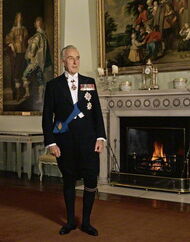
Portrait of Ferdinand I as Great Prince
Prior to the Rothingren Restoration of 2903 education in Trigunia had been declining rapidly and largely ignored by the many communist governments and dictatorships of the past several centuries. When the monarch was restored R.D. Mashkov, 1st Duke of Petrovgrad and his Young Guard Party tackled the education issue in the island nation head on.
The biggest challenge in reforming the educational system was the actual language of Trigunia. Since many complaints from foreign business clients, especially Hulstrian firms, had voiced the difficulty of effectively translating their data from one language to another, let alone the differing alphabets; the Ministry of Trade and Industry cited this problem as forcing foreign nations to look elsewhere for their data processing and technology needs; Minister Vasili Y. Domostroy stated in a press conference that it was "estimated that possibly upwards of 14 billion rabols is lost" because of this problem. Starting in 2905, the government passed the Official Latinization of the Language, Educational & Budget Act which officially changed the old Tokundian alphabet used in the Rodshya language to those of Latin letters used in nearly all other languages on Terra.
The government cited the need to modernize the language in the nation's quest to become a "high-tech and information technology, science and biotechnology superpower" or simply a "knowledge economy". However many traditionalists still used the old alphabet and continued to publish in it; so, in order to ease their apprehension, the government also sponsored in the bill the creation of good archives to maintain the old and offers classes in the old language for higher education students to take free of cost, not surprisingly, most of the takers of these courses are history or humanities students who wish to better understand the past through the reading of the actual primary documents.
Since the Reforms officially made the entire country illiterate overnight, the government funneled billions of rabols in order to train educators and fund classes to teach all adult Trigunian nationals to read and write with the new alphabet absolutely free of charge, even with heavily-subsidized childcare and transportation costs in most areas. This movement came to known as "Operation Forward!"; although they came to be known as the Volkonsky Reforms, after Trigunian Minister of Education and Culture Minister, Andrei Ivanovich Volkonsky, the driver of the reforms. Today Trigunia, thanks to these reforms, significantly improved their eductional backround, and test scores, including success rates for students, rose significantly as well. Tagged along with these legislative reforms, Great Prince Ferdinand I increased his patronage role, and royal influence to help towards the construction of new schools, new universities, and teacher training programs.
Tragedy Hits the Great Princedom[]
The Great Princedom Trigunia under the efforts of Operation Forward! and the Mashkov Reforms regained her lost political, cultural, and economic status on the continent of Keris and interntionally which had been deprived her by the various communist governments of the past centuries. Both Viceroy Mashkov and the Great Prince enthusiastically lead the charge for reform by taking active roles in the nation via public engagements and patronage, even having to go so far as to coordinate between their offices so as not to stepp on each other's toes. Thanks to all the effort done by both branches of governemnt the reforms paid off. The educational system was reformed the most radically and had the most profound effects which created a domino effect on the rest of Trigunia society. With higher educational rates, millions of citizens increased their personal income and standard of living levels through employment in high-paying jobs. Greater and greater numbers of citizens involved themselves in the politics of Trigunia of which the centre-right Young Guard Party gained immensely from that, further increasing their influence across the Great Princedom.

Viceroy Mashkov in 2921
However, despite the growing power and influence of the Young Guard Party, they were not at all immune to the attacks of other political parties. While in a coalition government with the Trigunian Patriot Party, the latter frequently made known their views regarding the "Hulstrianization" of Trigunia. The Patriots were hardline nationalists and often times pushed their legislation causing major rows with the Young Guards. The Trigunian Patriots experienced a very short stint of power when their leader, Rodion Ivanovich, was voted to serve as Viceroy of Trigunia from 2916 to 2918. Mashkov was not detered from his defeat or his party's defeat and easily returned to power in 2918 as the Viceroy. Shortly following Rodion Ivanovich's was ousted, the Patriots imploded and left the Trigunuan political scene in defeat.
As Trigunia began to increase diplomatic cooperation abroad, Hulstro-Trigunian relations were taking a new turn. Isolde von Smaragdwald, the then Governor-General of Greater Hulstria, and then Hulstrian Foreign Minister Arnold Bauer-Chamberlain expressed their interest in receiving R.D. Mashkov in a State Visit in Kien, however, due to Isolde's term restrictions, she was unable to see through the State Visit herself. Viceroy Mashkov was greatly interested in a formal State Visit to solidify relations between the two nations as well, and he planned it for June of 2922; his visit would've marked the first time a Viceroy had visited Greater Hulstria. This sparked great interest in the trip on both sides; the citizens of Kien were aware of the Duke of Petrovgrad's successes and were excited to welcome the Viceroy to their city. Many events and festivities were planned, including a very lage state dinner at Fliederbrunn Palace. Several members of the Trigunian cabinet were as well expected to attend, including several of Mashkov's close political allies, and elite of the Young Guard Party.
On June 15th, 2922, R.D. Mashkov, Duke of Petrovgrad, Viceroy of His Royal Northern Highness Ferdinand I along with the Chairman of the Young Guard Party, and Shadow Internal Affairs Minister Vasili Yuryevich Domostroy were on their way to the Heinrichgrad International Airport to depart on an official state visit to Greater Hulstria. In Kien the Kaiser was at Fliderbrunn Palace awaiting the arrival of the Trigunian delegation and Minister of Foreign Affairs Arnold Bauer-Chamberlain was making final preperations to receive the delegation at the airport in Kien. Mashkov and the rest of the Trigunian delegation did not make it to the airport however; driver Yuri Chkalov had lost control of the motorcade when he experienced a blow out in one of the tires and skid out of control before rolling in the ditch of the opposite lane. The rainy conditions were suspected as having contributed to the deadly accident. All in the car, including the wife of R.D. Mashkov Katerina Y. Mashkova, perished in the accident; the accident plunged the nation of Trigunia into a state of mourning. The popular R.D. Mashkov was going into his seventh term as Viceroy of Trigunia; a state funeral was held for all four crash victims, although Mashkov and Domostroy’s bodies lied in state for several days, they were closed casket. After the funeral ceremony, the Mashkovs were transported by police escort to their final resting place in St. Paul’s Lutheran Cemetery in their native Petrovgrad. Ferdinand II was one of the many delegates to the State Funeral including a who-whos of the Trigunian nobility scene. Thousands of onlookers lined the roads to pay their respects. Many in the crowds were visibly weeping as the motorcade sped past.
Imperial Court in the 2940s and '50s[]
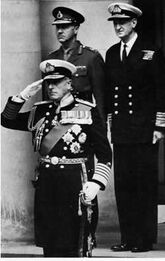
Ferdinand pictured here at Joseph III's funeral
Ferdinand II in the 2940s was going long into his reign. He has already surpassed his father's reign and the reign of his paternal great grandfather, Klaus Gustav IV of Hulstria. Greater Hulstria and Trigunia were both facing periods of wealth and prosperity, along with an active political climate in both nations as well. The rise of conservatives in the nations of the personal union, as well as rise of conservative governments in Drania, Kazulia, and others created the Age of Conservatism in many political arenas around the globe. Ferdinand II however did not align himself with these nations based on politics, retaining his apolitical, and unity figure as Emperor of Hulstria and Great Prince. What was also on the rise in Terra was the spread of the Rothingren blood line; in the late 2930s Ferdinand's cousin, Archduchess Henrietta of Hulstria, married the heir to the Endralon throne, Crown Prince Joseph of the House of Fortenohfiv, and had a child shortly after, Prince Robert. Joseph's father, Joseph III of Endralon, however was disposed in a republican coup a decade prior to the marriage but nonetheless the Fortenohfiv's had recognition from the International Monarchist League, a move strongly pushed and supported originally by Klaus Gustav IV of Hulstria in the 2880s. Archduchess Henrietta was the great grand-daughter of Godric II of Hulstria and Roberta, Viscountess of Ayelsbury, as such Princ Robert was included in the Line of succession to the Hulstrian throne following his christening. Ferdinand II was a vocal supporter of the Fortenohfivs in the IML, whom he saw as a stabilizing force in Endralon, noting the peaceful reign of Joseph II of Endralon. However Endralon was put into a state of crisis in the early 2950s when Joseph III was assassinated in a pro-monarchist rally in the Endralon capital; a faction soon arised and toppled the government in a coup with aristocrat Ottokar taking power and claimed himself king. Ottokar though not a Fortenohfiv. This new monarch attempted to gain IML recognition in the IML, but Ferdinand II as well as other monarchist voices rejected the request, deciding to stick with their original recognition of the House of Fortenohfiv and their new leader Crown Prince Joseph, now Joseph IV of Endralon following his father's death, as the rightful claimant to the throne of that nation. The assassination was condemned swiftly by Ferdinand II as well among other monarchs; the group or person behind assassination today remains a mystery though they are plenty of theories.
In the Trigunian Great Princedom, many of Ferdinand's children began to take an increased involvement in the affairs of the nation in the sense they took part in many patron activities, and acted as representatives of Ferdinand in many circles. His third son and child, Archduke Maximilian for example became a fixture among Trigunian circles; he was even born at the Bear's Den in Heinrichgrad, the capital of Trigunia. Maximilian went on to sit on the executive board for the World Economic Forum in 2949, specializing in Trigunian economic affairs; shortly following his accession to the WEF in the early 2950s Archduke Maximilian was named the honorary president of the Heinrichgrad based Hulstro-Trigunian Industrial Relations Council. The Kaiser's son was also named as a special Hulstrian ambassador to Trigunia by the Ministry of Foreign Affairs and heads the main Hulstrian embassy in Heinrichgrad. This close bond helped further the relations between the two nations in personal union, along with efforts as well from the Governor-General of Greater Hulstria, Joseph Roderick II, who before he left the office in 2942 took part in the first ever state visit to Trigunia by a Hulstrian Governor-General. After he retired from political life, Roderick was awarded the title of the "Baron of Respvos" by the The Gracious & The Most Honorable High Chamber of Lords of Trigunia in 2942.
By the time Trigunia entered the 2960s however republican activity increased. Hanna Mashkova, 1st Duchess of Petrovgrad, was able to fend off the republican threat but was briefly ousted from power in the summer of 2965. Gregor Krylov, leader of the Trigunskaya Partiya Patriota, took a surprising leap to power in June of 2965 in what was nothing short of an attempted coup of the government some political observers said during this time. Krylov was a poor leader though and couldn't hold onto power, nor the support of the people, for very long. The Molodaya Gvardiya Partiya still had a commanding majority in the government and called a special election in July of 2965 where Gregor Krylov was defeated and the Trigunskaya Partiya Patriota fell once again.
Great Sekowian War[]
Main Article: Great Sekowian War
Widowed Emperor[]
The Kaiser and his consort, Princess Harriet, were well into their late 80s during the start of the war. Ferdinand II was only a few years younger than Harriet and the two litterally had seen each other grow old; the two royals had been involved with each other since their late teen years in the 2880s when they first met during a state visit from George VI to Greater Hulstria in the late 2880s. While the early years of their relationship were long distance, due to their respective educational and military careers, they had been since their marriage in the start of the century inseperable. The Kaiser and the Empress had raised four children all while sitting on the thrones of Hulstria and Trigunia, including the Grand Duchy of Sisula when the Barmenian monarchy was restored in the late 2950s. Princess Harriet had always been outgoing and charming, she was loved by the Hulstrian, and Trigunian citizenry; in Greater Hulstria she was known among the population as the "Grandmother of Greater Hulstria" during her elder years. While Kaiser Ferdinand had never been known to be shy, when the Kaiser may have been private and silent in certain situtations, Harriet filled in those gaps by exerting her warming personality upon whomever she as talking to. Harriet was also a close confidant to the Kaiser, often times serving as his closet adviser; Amadeus von Staufboro, who acted as the Chief Officer of the Kaiser’s economics council, told one to reporters that Harriet was Ferdinand’s “consort, mother of his kids, and adviser” all in one.
Endralon Civil War[]
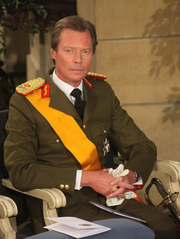
Ottokar I of Endralon
About the same time the Great Sekowian War broke out, another conflict was brewing halfway across the globe; a very tense domestic situtation in the Kingdom of Endralon turned into a bloody civil war between Syldavian and Fortenohfiv loyalists, whom the latter called themselves "resistance fighters" against the Syldavia monarch. In 2956, about four decades after the ousting of Joseph III of Endralon from the Endralon throne, Prince Ottokar of the House of Syldavia, an Endralon aristocratic family from the Duklja region of Endralon, was crowned as the new King of Endralon by the legislature in a daring coup of the government; Ottokar, now King Ottokar I of Endralon, was never given recognition from the International Monarchist League and the Fortenohfivs, who were ousted, were still recognized as the rightful claimants to the Endralon throne by the organization. When Joseph III was assassinated, his son Joseph Fortenohfiv was named the new pretender to the throne of Endralon and head of the House of Fortenohfiv. The new pretender took on a more aggressive route to retake the throne from what he labeled illegitimatists, accusing them as much as being the ones who assassinated his father, and rallied a large support base to "retake the government"; Joseph was married to Archduchess Henrietta of Hulstria, and thus was cousins with Ferdinand II. As such when the civil war did break out political observers believed that due to family connections Greater Hulstria would militarily aid the Fortenohfivs, however the Imperial Diet was not in favor of getting involved in the civil war. They did not want to send troops as they had already committed hundreds of thousands of soldiers from both the active and reserve divisions of the Imperial Army in Sekowo; some aid, in form of medical supplies, was sent in favor of the Fortenohfivs but humanitarian aid was greatly sent to the nation as whole where places were hit hardest by the fighting. Public support was also given in the sense that the Hulstrian government, a member of the IML, supported the claim of the Fortenhofivs to the throne of Endralon. Before the civil war began further public support came when Joseph IV went before the International Monarchist League and Kaiser Ferdinand among other monarchs joined in keeping IML recognition for the Endralon pretenders. Following this and learning of possible plans for conflict, Ferdinand II offered asylum to the Fortenohfiv family; Ferdinand II, according to accounts from his personal secretary, believed by offering political asylum to Joseph IV may avert a civil war as the Kaiser thought personally that seeking armed conflict was not the best option to restore the rightful monarch. Gaining public support and using wise political maneuvering would be the best way at trying to get the rightful King placed back on the throne. The Kaiser was also worried on the safety of his cousin Henrietta. Joseph IV refused the political asylum and the suggestions by the Kaiser, determined to take on the House of Syldavia.
The fighting between the Slyldavian and Fortenohfiv forces began in July of 2964 and ended about August of 2967. Joseph IV was defeated by the national army and was exiled while the Slyldavian government tightened its control over the nation; the IML still did not recognize Ottkar as the rightful king of Endralon despite his victory. Towards the conclusion of the war in June 2967 where the resistance were nearly defeated, a faction of the rebellion had utilised a vessel used by the resistance to leave Endralon, and seek political asylum in Hulstria where Joseph IV had refused. Sailors, rebel fighters and civilian sympathisers were put in this ship, called the Hope, to leave the war stricken nation; records show more than 2,000 people boarded this ship to leave the nation but the records did not include the other many civilians who boarded the ship without being counted. The Hope was intended to sail to the eastern territories of the Hulstrian Empire where they would be given aid and medical assistance; many of the people aboard of this were civilians, some of which were probably not sympathisers with either side of the conflict, looking for a new life.
Conditions in Endralon became very bad after two years of armed conflict and the Hulstrian government, realizing the human toll of the civil war, eventually decided to accept the Hope on conditions the rebels in the ship would lay down their arms, and disband as Hlstrian law does not permit paramilitary organizations as the resistance was technically a paramilitary group. As the Hope sailed off along with a passenger liner, also filled with civilians and military personnel, and two rebel-controlled torpedo boats who served as escorts. The liner and one torpedo boat developed mechanical problems and could not continue, leaving the Hope with only one escort ship; the commander of the Hope decided to continue on into deep water despite losing his escort. The Hope, sailing into deep waters, was spotted by a loyalist submarine the Incursion; it is not known if the Incursion made attempts to contact the boat, or was aware that vessels were leaving towards Hulstria, but the loyalist submarine boat launched over three torpedos at the Hope, which contained a large amount of civilians. All 2,000+ people on the ship died as a result of the attack; the Slyldavian government claimed the Hope was a legitimate target as it was transporting enemy despite the fact that the Hope was serving as mainly a civilian transport. The Hulstrian government condemned the attack and called it a "waste of human life"; Ferdinand II was deeply troubled and saddened by the event. He refused for the rest of his tenure to recognize the Syldavians. International reaction was also negative to the sinking and the International Monarchist League did not move to recognize the House of Syldavia until two hundred years later. The House of Rothingren-Traugott, under Godric III of Hulstria, would establish a formal alliance with the Syldavians, ending the tensions. The torpedoing of the Hope remains Endralon's worst maritime tragedy and became symbolic of the ruthlessness and ferociousness that characterised the Endralon Civil War.
Sekowo War Ceasefire[]
Later Years in the Imperial Court[]
Following the Sekowo Ceasefire Accords Kaiser Ferdinand began to transfer more responsibilities to his son, Crown Prince Rainer, to continue prepping him to take the throne one day. Rainer of course was born during the early years of Ferdinand's reign, about six years after his initial coronation as Kaiser in 2906; this positioned Rainer, including his sibilings, to be in and around the workings of the Imperial Court litterally their entire lifes. Rainer was involved in administration even prior to the aftermath of the Great Sekowian War; Ferdinand had appointed his son to several different positions in the Imperial Court which included posts as the Crown Commissioner of Hulstria, and Chief Imperial Officer of Human Resources of the Colonies. Other posts included the head of the Hulstrian diplomatic office in Trigunia and Chief Imperial Officer of His Imperial Majesty's Council on Foreign Affairs; in the later years of Ferdinand's reign Rainer would also get more involved in the International Monarchist League, eventually at times taking his father's place at IML conferences when Ferdinand was unable to attend. The latter event was one of the several new responsibilities Kaiser Ferdinand II had given to his son. The later years of Ferdinand's reign also saw the collapse of Rothingren-Traugott ally, the House of Santiago, to socialist republican agents in the Dovani north-western state of Drania; Ferdinand II would welcome Rodrigo I of Drania and his family to live in Hulstria in exile while Ferdinand and the International Monarchist League continued to support the Santiago claim to the Danian throne. Ferdinand II was great uncle to Rodrigo I.
Claimant to the Deltarian throne[]
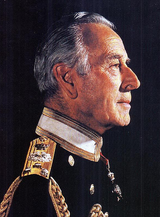
Kaiser Ferdinand uniformed in his mid-80s
Years prior to his death Ferdinand II was still active among the monarchist circles on Terra, even if he had his children act as representatives for him in certain situtations; one of these situtations and monarchist events came up before the International Monarchist League concerning the rise of a new royal house in the nation of Deltaria with blood connections to the old dyansty of the House of Lineykova, specifically Ladislav I of Deltaria who ruled as the last Czar of Deltaria before the monarchy was abolished. The new claimants, the House of Svatý-Poděbrad, went before the leadership council of the IML pleading their case for recognition as the next monarch of Deltaria to replace the House of Lineykova; the Svatý-Poděbrad claimants presented evidence linking their claim to the throne, one of which was a marriage between the eldest daughter of Ladislav I of Deltaria, and a noble from the Svatý-Poděbrad family. The Svatý-Poděbrads however claimed the daughter of Ladislav I, Princess Sofia, was the only child of Ladislav I; this was incorrect. The Deltarian claimants were correct in their information concerning the fact that Ladislav I of Deltaria did not produce a male heir to the Lineykova Dynasty, and thus the direct-male line of the dynasty died out, they were wrong though on the amount of daughters the former Czar had; the Czar had two daughters, one of them Sofia, and the other Andela. The latter princess had married Archduke Konstantin of Hulstria, later Heinrich II of Hulstria, and had one child who went onto become Franz VI of Hulstria; Heinrich II and Andela Andela are Ferdinand's great great great great great great grandparents, as such Ferdinand II was as well a descendant of Ladislav I, and had legitimate claim to the throne. Due to the fact the House of Svatý-Poděbrad had been unknown to the greater monarchist community Ferdinand II, who also held the Deltarian hereditary title of the Margrave of Hradec Kralove, asserted his claim to the throne by presenting this evidence, and contested with the Svatý-Poděbrad claim by pushing for International Monarchist League recognition of Ferdinand as the Deltarian Czar.
Ferdinand II however decided to use the power of diplomacy rather than the might of the sword in this instance with the House of Svatý-Poděbrad; the Svatý-Poděbrad family had a chance to return to the Terran political stage the Deltarian monarchy and Ferdinand II was not ready to break the IML code of fighting with another monarchist nor wage another war. Ferdinand II thus approached the head of the Svatý-Poděbrad and proposed to him several options on how to deal with the dueling claims to the Deltarian throne. The Hulstrians proposed two main options to the House of Svatý-Poděbrad. The first option proposed the House of Svatý-Poděbrad become a cadet branch of the House of Rothingren-Traugott and the throne of Trigunia becomes a dual monarchy with the Kaiser and the Rothingren Czar of Trigunia. The second option proposed a marriage between a Deltarian and Hulstrian royal to establish a natural alliance between the two monarchies, as well as an agreement to engage in a new political alliance by treaty; it also proposed the Kaiser of Hulstria take up the full throne of Trigunia as Tsar. In an old agreement between Heinrich I of Hulstria and Ladislav I of Deltaria following Heinrich I's successful efforts to establish a Trigunian monarch, the Kaiser became the "representative" of Deltaria as Great Prince, and the Deltarian Czar became the Trigunian Tsar since before the collapse of their but the Great Prince held more power as it was closer to the legislature. However through the years and the end of the Ladislav direct male line, the Great Prince more and more become the "monarch of Trigunia" by default and less a representative of the Deltarians. In the Rothingren Restoration in 2903 by R.D. Mashkov, who was later enobled as the Duke of Petrovgrad, the Great Prince was only restored, and under the reign of both Ferdinand II and his father Maximilian VII, the Trigunian monarchy became incresingly close to Hulstrian culture and values, while maintaining it's own unique customs and traditions. The proposal to give the throne completely to the Hulstrians was seen a move to finally formalize the new given reality in the Great Princedom. The House of Svatý-Poděbrad agreed to the latter; they would cease claims to Trigunia and recognize the Emperor of Hulstria as the Tsar of Trigunia, including agreeing to a marriage. In exchange the Svatý-Poděbrad would receive the hereditary title of the Duke of Rodyshadam, a Trigunian noble title. Ferdinand II would not however see the "Treaty of Heinrichgrad" come to be, which would be the agreement that established what was agreed upon at the International Monarchist League.
Death[]
Legacy[]
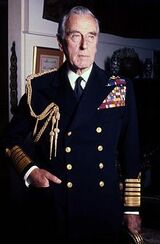
Ferdinand II reigned as the longest serving monarch in Hulstrian history
Ferdinand II reigned from 2906 to 2977, making him the longest reigning monarch in the history of Greater Hulstria; since he also Great Prince of Trigunia since the two nations of Hulstria and Trigunia were in personal made him as well the longest reigning monarch in Trigunian history. Ferdinand ascended to the throne at a young age, allowing the monarch to reign as long as he did. Ferdinand's childern with Princess Harriet of Talmoria would go onto serve as exemplary royals; his sons Arcdukes Heinrich and Maximilian would go onto marry daughters of influential, high-ranking noblemen in the royal circles of Greater Hulstria, and Trigunia respectively. Ferdinand's eldest son, who'd assume the throne as Rainer V of Hulstria following his death, would go onto marry Princess Rosaline of Luthori, strengthening the ties between the two nations, and reinforcing the House of Rothingren-Traugott. Ferdinand II's only daughter, Archduchess Aleksandra, would go onto marry Casimir I of Rutania, and became the Queen-consort of Rutania, producing two issues including the future King of Rutania, Alexander I, who took his name from Alexander I of Hulstria. All of Ferdinand II's children would remain close to the Kaiser and were with him at his death bed. Ferdinand's grandson Leopold I of Hulstria would go onto marry the sister of the Czar of Deltaria and produced three issues. Ferdinand's great grandsons, Archdukes Godric and Klemens, would assume the title the Emperor of Dolgaria and Sultan of Al'Badara, respectively. Additionally despite Ferdinand's opposition to the House of Syldavia due to the aftermath of the Endralon Civil War, his great great grandson Archduke Balthazar would assume the throne of the nation of New Endralon, and marry the daughter of the then reigning King of Endralon Ottokar III, finally stablizing relations between the courts.
Ferdinand II's long reign allowed him to see many events within the courts of Hulstria and Trigunia, as well as to serve over several different governments in both nations. Seven Governor-Generals of Greater Hulstria served as the representative of His Imperial Majesty and four served as the Staatsminister of His Imperial Majesty's Government; seven Trigunian Viceroys served under the Trigunian banner, with many of them having the Mashkov name, and the almost the same about served under Ferdinand as Trigunian Chief Boyars. Both governments saw extensive periods of power from their respective conservative political parties and power blocs under Ferdinand; the Molodaya Gvardiya Partiya had defeated radical elements of the Trigunian Patriots Party to gain an absolute majority in the Trigunian government and despite the death of their founder, R.D. Mashkov, in the early 2920s, the Molodaya Gvardiya Partiya would serve as the central representatives of both the nobility and monarchy of the Great Princedom throughout the reign of HRNH Ferdinand I of Trigunia. Trigunia under the reign of the Great Prince also saw its reestablishment as an economic and military power, both on Keris and on the global stage. At the time of the restoration of the Great Princedom, which was spearheaded by R.D. Mashkov, and done under Ferdinand's father, Maximilian VII of Hulstria, Trigunia had been paralyzed by corrupt economic policies, and inefficient government. Thanks to the efforts of both the Crown and the Molodaya Gvardiya Partiya Trigunia from the Rothingren-Traugott restoration to the death of Ferdinand II, Trigunia had seen a powerful rebirth of culture, economy, and influence. Trigunia participated fully in the Great Sekowian War and worked side-by-side with Hulstrian forces during the late stages of Operation Steel Impetus, and Operation Imperial Storm.
The Kaiser of Hulstria was a founding member of the "Imperial Consortium", the triple nation alliance between Drania, Hulstria, and Talmoria. Talmoria never became a full participating member of the alliance as the House of Hemmingway was overthrown in a coup, leaving Drania, and Hulstria to become the sole two members. Ferdinand II would see both the rise and fall of the House of Santiago, the Drania royal family whom the Hulstrian court would grow very closely to through the years; Ferdinand's younger brother, Archduke Leopold, would even go onto marry Princess Lucinda of Drania, the daugther of the first King of Drania, Alejandro, and sister to future King, Carlos I of Drania, whom Ferdinand II would form the alliance with eventually. The sudden death of Regina I of Drania in 2958 hurt the Dranian monarchy and the rise of radicalism under Rodrigo I of Drania's reign eventually proved to be too much for the Theocratic Kingdom of Drania as the it was abolished, and Rodrigo I was forced to abdicate the throne in winter of 2967 during a ultra-nationalist revolution in the middle of the Great War; Rodrigo I would seek exile and asylum in Greater Hulstria. Ferdinand's son Rainer V continued his pro-Santiago policy and supported the return of Rodrigo I to the throne of Drania; the Hulstrian government had as well endorsed the restoration. It would not be until the reign of Leopold I of Hulstria, Ferdinand's grandson, when the Santiago family was restored to the throne in 3005. The Imperial Consortium formed under Ferdinand's reign still continues today between Greater Hulstrian and Dranian nations.
Residences[]
In Greater Hulstria, Ferdinand's primary residences were Fliederbrunn Palace, Korlburg Palace, and Phönixstein Castle; other secondary residences include Castle Hulstria and the Imperial Hildebrandt Palace. Kaiser Ferdinand had a private residence on the Budenlar coast, used primarily for family gatherings; when Ferdinand the then Crown Prince of Hulstria, that residence was used frequently. In Trigunia, Ferdinand's primary residence is the Bear's Den in Heinrichgrad, though also has other estates within the Great Princedom.
Personal Life[]
A traditional and doctrinal figure, Ferdinand II was groomed at a very young age to rule the Imperial Court; he would go onto serve as the longest reigning monarch in Hulstrian history. While orthodox at times Ferdinand II was loved by the people and the Kaiser was close to them; the Kaiser enjoyed throwing large parties and get togethers, including taking part in many domestic and foreign travels were his charm would captivate the people around him. As a young man Ferdinand was a bit of a womanizer but was not an eccentric on that front; he had found love with Princess Harriet, daughter of a Talmorian king, at an early age, and remained with her throughout his entire life.
Interests[]
Duties & Responsibilities[]
When Kaiser, Ferdinand II was the Supreme Commander of Imperial Forces in Greater Hulstria, holding a considerable amount of power within the military circles of the nation. While he shared certain powers with the Ministry of Defense, Ferdinand II has his own special, and executive powers concerning military matters. That is in the realm of military duties; with concerns to politics the Kaiser is very much close to the Staatsminister of Greater Hulstria.
Ancestry[]
Not noted on this list, Ferdinand II also descended from many notable foreign monarchs including; Leopold II of Central Macon, Josephine I of Luthori, Thorssen I of Kazulia, Ladislav I of Deltaria, Matti I of Valonen, Vademar I of Vorona, Louis III of Solentia, Valdemar I of Vorona, Fridrich XII of Zardugal, Charles I of Rildanor, and Edward II of Pontesi.
Issue[]
- Archduke Rainer, Crown Prince of Hulstria, Hereditary Prince of Tirgith (b.2912)
- Archduke Heinrich of Hulstria, Prince of Tirgith (b.2914)
- Archduke Maximilian of Hulstria, Prince of Tirgith (b.2916)
- Archduchess Aleksandra of Hulstria, Princess of Tirgith (b.2920)
| Issue | Portrait | Born | Consort |
|---|---|---|---|
| Rainer V of Hulstria |  |
2912 | Princess Rosaline of Luthori |
| Archduke Heinrich |  |
2914 | Abigail von Bruegweiger |
| Archduke Maximilian |  |
2916 | Elizaveta von Tolokomansk |
| Archduchess Aleksandra |  |
2920 | Casimir I of Rutania |
Name Origins[]
The official origins of Archduke Ferdinand's given name;
- Ferdinand - After Ferdinand I of Hulstria
- William - After William IV of Luthori
- Franz - After Franz VI of Hulstria
- Karl - After Karl, Crown Prince of Hulstria
Nicknames[]
- Naval Emperor
Governor-Generals & Staatsministers[]
A list of Governor-Generals that Ferdinand II has been monarch over since he assumed the throne in 2906 until his death in 2977;
| Name | Picture | Took Office | Left Office | Party |
|---|---|---|---|---|
 |
Kaiserliche Hulsterreichische Partei | |||
 |
Kaiserliche Hulsterreichische Partei | |||
 |
Reichsordnung des Ritter-Illuminaten | |||
 |
Faschistische Gewalt-Partei | |||
 |
Faschistische Gewalt-Partei | |||
 |
Faschistische Gewalt-Partei | |||
 |
Faschistische Gewalt-Partei |
A list of Staatsministers that Ferdinand II has been monarch over since he assumed the throne in 2906 until his death in 2977;
| Name | Picture | Took Office | Left Office | Party |
|---|---|---|---|---|
 |
Christliche Liberalen Allianz | |||
 |
Kaiserliche Hulsterreichische Partei | |||
 |
Kaiserliche Hulsterreichische Partei | |||
 |
Kaiserliche Hulsterreichische Partei |
Viceroys & Chief Boyars[]
A list of Viceroys Ferdinand has been Great Prince over since 2906;
| Name | Picture | Took Office | Left Office | Party |
|---|---|---|---|---|
 |
Molodaya Gvardiya Partiya | |||
 |
Trigunskaya Partiya Patriota | |||
 |
Molodaya Gvardiya Partiya | |||
 |
Molodaya Gvardiya Partiya | |||
 |
Molodaya Gvardiya Partiya | |||
 |
Molodaya Gvardiya Partiya | |||
 |
Molodaya Gvardiya Partiya | |||
 |
Trigunskaya Partiya Patriota | |||
 |
Molodaya Gvardiya Partiya |
A list of Chief Boyars Ferdinand has been Great Prince over since 2906;
Gallery[]
Titles & Styles[]
| House of Rothingren-Traugott | |
|---|---|

| |
- Titles
- Prince-Royal of Alduria (Febuary 18 2870 – 14 December 2977)
- Styles
- His Imperial Highness ((Febuary 18 2870 – 14 December 2977)
- Primary form of address
- His Imperial Highness Ferdinand, Prince-Royal of Luthori (Febuary 18 2870 – 14 December 2977)
The Imperial Crownlands of Greater Hulstria:
- Titles
- Archduke of Hulstria (Febuary 18 2870 – 1 November 2906)
- Crown Prince of Hulstria (May 24 2870 – 1 November 2906)
- Emperor of Hulstria (1 November 2906 – 14 December 2977)
- Styles
- His Imperial Majesty (Febuary 18 2870 – Present)
- Primary form of address
- His Imperial Majesty Ferdinand, Archduke of Hulstria (Febuary 18 2870 – 1 November 2906)
- His Imperial Majesty Ferdinand, Crown Prince of Hulstria (May 24 2870 – 1 November 2906)
- His Imperial and Most Illustrious Lutheran Majesty Ferdinand II, Emperor of Hulstria (1 November 2906 – 14 December 2977)
- Titles
- Prince-Royal of Luthori (18 Febuary 2870 – 14 December 2977)
- Styles
- His Imperial Highness (18 Febuary 2870 – 14 December 2977)
- Primary form of address
- His Imperial Highness Ferdinand, Prince-Royal of Luthori (18 Febuary 2870 – 14 December 2977)
Grand Duchy of Sisula:
- Titles
- Duke of Siula (Febuary 18 2870 – May 24 2870)
- Crown Duke of Sisula (May 24 2870 – 1 November 2906)
- Grand Duke of Sisula (1 November 2906 – 14 December 2977)
- Styles
- His Royal Highness (Febuary 18 2870 – 14 December 2977)
- Primary form of address
- His Royal Highness Ferdinand, Duke of Sisula (Febuary 18 2870 – May 24 2870)
- His Royal Highness Ferdinand, Crown Duke of Sisula (May 24 2870 – 1 November 2906)
- His Royal Highness Ferdinand I, Grand Duke of Sisula (1 November 2906 – 14 December 2977)
- Titles
- Margrave of Hradec Kralove (1 November 2906 – 14 December 2977)
- Styles
- His Grace 1 November 2906 – Present)
- Primary form of address
- His Grace Ferdinand, Margrave of Hradec Kralove (1 November 2906 – 14 December 2977)
Principality of Central Macon:
- Titles
- Knight of Ayelsbury (Febuary 18 2870 – 1 November 2906)
- Count-Royal of Central Macon (Febuary 18 2870 – 1 November 2906)
- Prince-Royal of Central Macon (1 November 2906 – 14 December 2977)
- Viscount of Ayelsbury (1 November 2906 – 14 December 2977)
- Styles
- His Royal Higness (Febuary 18 2870 – 14 December 2977)
- Primary form of address
- His Royal Highness Ferdinand, Knight of Ayelsbury (Febuary 18 2870 – 1 November 2906)
- His Royal Highness Ferdinand, Count-Royal of Central Macon (Febuary 18 2870 – 1 November 2906)
- His Royal Highness Ferdinand, Prince Royal of Central Macon (1 November 2906 – 14 December 2977)
- His Royal Highness Ferdinand, Viscount of Ayelsbury (1 November 2906 – 14 December 2977)
- Titles
- Prince of Lodamun (1 November 2906 - )
- Styles
- His Royal Higness (1 November 2906 - )
- Primary form of address
- His Royal Highness Ferdinand, Prince of Lodamun (1 November 2906 - )
Grand Duchy of Valonen:
- Titles
- Viscount of Savonia (Febuary 18 2870 – 1 November 2906)
- Count of Savonia (1 November 2906 – )
- Styles
- His Majesty (Febuary 18 2870 – )
- Primary form of address
- His Majesty Ferdinand, Viscount of Savonia (Febuary 18 2870 – 1 November 2906)
- His Majesty Ferdinand, Count of Savonia (1 November 2906 – )
Kingdom of Pulond:
- Titles
- Duke of Köflach (24 May 2892 – 1 November 2906)
- King of Pulond (1 November 2906 – )
- Styles
- His Royal Majesty (7 August 2881 - )
- Primary form of address
- His Royal Majesty Maximilian, Duke of Köflach (24 May 2892 – 1 November 2906)
- His Royal Majesty Ferdinand I, King of Pulond (1 November 2906 – )
Democratic Empire of Talmoria:
- Titles
- Prince of Talmoria (10 November 2902 - )
- Duke of Southborough (3 December 2902 - )
- Styles
- His Royal Highness (10 November 2902 - )
- Primary form of address
- His Royal Highness Ferdinand, Prince of Talmoria (10 November 2902 - )
- His Riyak Highness Ferdinand, Duke of Southborough (3 December 2902 - )
- Titles
- Prince of Tirgith (Febuary 18 2870 – May 24 2870)
- Hereditary Prince of Tirgith (May 24 2870 – 1 November 2906)
- Great Prince of Trigunia (1 November 2906 – Present)
- Styles
- His Royal Northern Highness (Febuary 18 2870 – Present )
- Primary form of address
- His Royal Highness Ferdinand, Prince of Tirgith (18 Febuary 2870 – May 24 2870)
- His Royal Highness Ferdinand, Hereditary Prince of Tirgith (May 24 2870 – 1 November 2906 – Present)
- His Royal Northern Highness Ferdinand I, Great Prince of Trigunia (1 November 2906 – Present)
Democratic Kingdom of Tukarali:
- Titles
- Baron of Nusira Lionta (18 Febuary 2870 – 24 May 2892)
- Viscount of Nusira Lionta (24 May 2892 – 1 November 2906)
- Duke of Nusira Lionta (1 November 2906 – )
- Styles
- Primary form of address
- His Royal Highness Ferdinand, Baron of Nusira Lionta (18 Febuary 2870 – 24 May 2892)
- His Royal Highness Ferdinand, Viscount of Nusira Lionta (24 May 2892 – 1 November 2906)
- His Royal Highness Ferdinand, Duke of Nusira Lionta (1 November 2906 – )
- Titles
- Prince of Vorona (Febuary 18 2870 – Present)
- Grand Duke of Barovia (1 November 2906 – Present)
- Styles
- Primary form of address
- His Royal Highness Ferdinand, Prince of Vorona (Febuary 18 2870 – Present)
- His Royal Highness Ferdinand, Grand Duke of Bavoria (1 November 2906 – Present)
Full Title: His Imperial and Most Illustrious Lutheran Majesty, Ferdinand II, Defender of the Faith, by the Grace of God, Emperor of Hulstria, His Royal Northern Higness Great Prince of Trigunia, His Royal Highness Grand Duke of Sisula, His Royal Majesty King of Pulond; Lord Protector of the Eastern Territories; King of Mitrania and Budenlar; Sovereign of Greater Chadonya; Grand Duke of Hilgar and Kuratha; Prince of Vorona; Duke of Dalian; Elector of Tinako; Prince-Royal of Alduria; Count of Kremfurt; Prince-Royal of Luthori; Grand Duke of Barovia; Prince of Talmoria; Duke of Southborough; Count of Savonia; Grand Duke of Vojnov Pokrik; Margrave of Hradec Kralove; Palatine of Phönix and Flieder; Duke of Marchau, Straussia, and Traugott; Margrave of Hømvejile; Viscount of Ayelsbury; Duke of Chadonia; Duke of Lesser Chadonya; Duke of Garekavmo; Earl of Kane; Duke of Nusira Lionta; Earl of Pulond; Prince-Royal of Falristan, Roccato, Kenai, and Lagard; Duke of Reinfeld; Duke of Kathre; Grand Duke of Malchik, & Tirvoslavl; Margrave of Øivine; Count of Stary Kautsky; Duke of Tirgith; Grand Prince of Vorm; Margrave of New Yodukan, New Luthor, and New Liore; Marquis of Chaussée; Margrave of Varistad; Grand Duke of Belgae; Margrave of Kildan Olvar, Milrata, and Yulrath; Princely Count of Rothingren, Graaffsberg, and Veilchen; Duke of Franzstadt; Duke of Ziegendorf; Marquess of Mosjkojil; Grand Duke of Thague; Count of Kommenovsk, Morozorota, and Tirvoslavl; Viscount of Hannele; Count of Vesterbæk; Prince of Hennersdam and Korriel; Lord of Heinrichgard
Orders[]
Upon the passing of the Act of Imperial Orders in 2831, the Emperor of Hulstria was given the ability to issue imperial decorations or "Orders" to Hulstrians who have served in valor in the defense and protection of the Monarchy and commitment to Hulstrian cultural achievements; in the Act of Imperial Orders also designated Godric II of Hulstria, the monarch during the time of the passage of the bill, and future Hulstrian Emperors as the Head of these Orders:
- The Most Illustrious Order of Heinrich I
- The Order of the Phoenix
- Order of the Golden Star
- Imperial Service Order
- The Most Excellent & Distinguished Order of the Hulstrian Crown




















